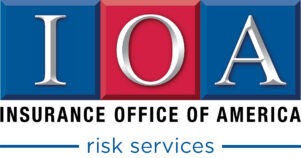
OSHA reminds employers to protect workers from dangers of carbon monoxide exposure
WASHINGTON –– With the arrival of cold weather, the Occupational Safety and Health Administration is reminding employers to take necessary precautions to protect workers from the serious, and sometimes fatal, effects of carbon monoxide exposure.
Recently, a worker in a New England warehouse was found unconscious and seizing, suffering from carbon monoxide poisoning. Several other workers at the site also became sick. All of the windows and doors were closed to conserve heat, there was no exhaust ventilation in the facility, and very high levels of carbon monoxide were measured at the site.
Every year, workers die from carbon monoxide poisoning, usually while using fuel-burning equipment and tools in buildings or semi-enclosed spaces without adequate ventilation. This can be especially true during the winter months when employees use this type of equipment in indoor spaces that have been sealed tightly to block out cold temperatures and wind. Symptoms of carbon monoxide exposure can include everything from headaches, dizziness and drowsiness to nausea, vomiting or tightness across the chest. Severe carbon monoxide poisoning can cause neurological damage, coma and death.
Sources of carbon monoxide can include anything that uses combustion to operate, such as gas generators, power tools, compressors, pumps, welding equipment, space heaters and furnaces.
To reduce the risk of carbon monoxide poisoning in the workplace, employers should install an effective ventilation system, avoid the use of fuel-burning equipment in enclosed or partially-enclosed spaces, use carbon monoxide detectors in areas where the hazard is a concern and take other precautions outlined in OSHA's Carbon Monoxide Fact Sheet. For additional information on carbon monoxide poisoning and preventing exposure in the workplace, see OSHA's Carbon Monoxide Poisoning Quick Cards (in English and Spanish).
Under the Occupational Safety and Health Act of 1970, employers are responsible for providing safe and healthful workplaces for their employees. OSHA's role is to ensure these conditions for America's working men and women by setting and enforcing standards, and providing training, education and assistance. For more information, visit www.osha.gov.
###